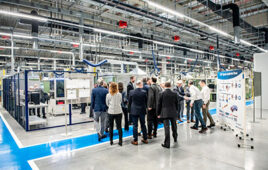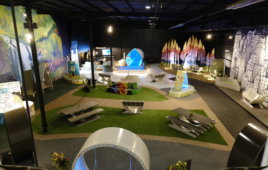Anne M Stark, LLNL, [email protected]
Americans used more natural gas, solar panels, and wind turbines and less coal to generate electricity in 2012, according to the most recentU.S. energy charts released by Lawrence Livermore National Laboratory. Each year, the Laboratory releases energy flow charts that track the nation’s consumption of energy resources.
Natural gas use is up particularly in the electricity generation sector, where it has basically substituted directly for coal, while sustained low natural gas prices have prompted a shift from coal to gas in the electricity generating sector, according to A.J. Simon, an LLNL energy systems analyst.
The 2012 energy flow chart released by Lawrence Livermore National Laboratory details the sources of energy production, how Americans are using energy and how much waste exists. URL for high rez version below picture.
https://www.llnl.gov/news/newsreleases/2013/Jul/images/28228_flowcharthighres.png
The rise in renewables is tied to both prices (the underlying cost of solar panels and wind turbines has gone down) and policy (government incentives to installers of equipment or renewable energy targets in various states), Simon said.
Overall, Americans used 2.2 quadrillion BTU, or quads, less in 2012 than the previous year (BTU or British Thermal Unit is a unit of measurement for energy; 3,400 BTU is equivalent to about 1 kW-hr).
Once again, wind power saw the highest gains, going from 1.17 quads produced in 2011 up to 1.36 quads in 2012. New wind farms continue to come on line with bigger, more efficient turbines that have been developed in response to government-sponsored incentives to invest in renewable energy.
Solar also jumped from 0.158 quads in 2011 to 0.235 quads in 2012. Extraordinary declines in prices of photovoltaic panels, due to global oversupply, drove this shift.
This is the first year in at least a decade where there has been a measurable decrease in nuclear energy.
“It is likely to be a permanent cut as four nuclear reactors recently went offline (two units at San Onofre in California as well as the power stations at Kewaunee in Wisconsin and Crystal River in Florida),” Simon said. “There are a couple of nuclear plants under construction, but they won’t come on for another few years.”
Coal and oil use dropped in 2012 while natural gas use jumped to 26 quads from 24.9 quads the previous year. There is a direct correlation between a drop in coal electricity generation and the jump in electricity production from natural gas.
The majority of energy use in 2012 was used for electricity generation (38.1 quads), followed by transportation, industrial, residential and consumption. However, energy use in the residential, commercial and transportation sectors decreased while industrial energy use increased slightly.
See the 2012 energy flow chart in high rez.
More info
U.S. Energy Flow Chart archive
Energy and Environmental Security
Interactive Energy and Climate Simulation
“Simulating the next generation of energy technologies,”
Science and Technology Review, December 2011
“A new era in climate systems analysis,”
Science and Technology Review, June 2012
LLNL
https://www.llnl.gov/news/newsreleases/2013/Jul/NR-13-07-04.html#.UfZn9tIU_nh
Windpower Engineering & Development
Filed Under: Green engineering • renewable energy • sustainability




